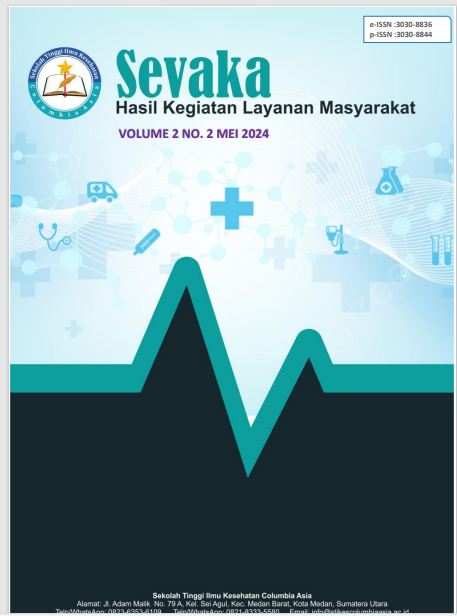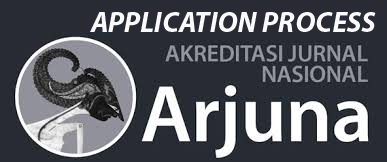Penyuluhan Penerapan Media Interaktif Untuk Analisis Leksikal Dalam Pengembangan Kosakata Bahasa Inggris
DOI:
https://doi.org/10.62027/sevaka.v2i2.535Keywords:
vocabulary, lexical analysis, interactive media, regional library, community serviceAbstract
Vocabulary mastery is a fundamental component in English language learning that determines comprehension, speaking, and writing skills. However, in the context of district-level communities, including the Regional Library of Labuhan Batu, vocabulary learning still faces various challenges such as the lack of contextual teaching materials, the dominance of rote learning methods, and the limited use of local resources. To address these issues, this Community Service Program (PkM) proposes the application of lexical analysis on 100 local library documents as the basis for developing interactive media used in vocabulary training. The method employed is a community-based participatory approach, with stages including preparation, lexical analysis, media development, training, and evaluation. Corpus analysis produced 27,800 word types with 200 high-frequency words and 1,350 distinctive local vocabulary items. The interactive media developed include multimedia modules, Wordwall quizzes, mobile-based gamification, and bilingual infographics. The training was attended by 40 participants, with evaluation results showing a significant improvement in the average post-test score (76.8) compared to the pre-test (42.5), and 82.5% of participants achieving scores ≥70. Furthermore, 90% of participants reported increased motivation to learn, and 85% considered the locally based materials more relevant. Thus, this PkM provides a tangible contribution to enhancing English literacy through local vocabulary and offers an interactive learning model that can be replicated in other regional libraries in Indonesia.
References
S. Alqahtani, “The effectiveness of using interactive media in enhancing English vocabulary acquisition,” International Journal of Instructional Technology, vol. 18, no. 2, pp. 45–56, 2021.
R. Kumar and L. Rose, “Lexical analysis in second language learning: A corpus-based approach,” Journal of Applied Linguistics, vol. 12, no. 1, pp. 33–47, 2021.
A. Putra and N. Lestari, “Implementasi media interaktif berbasis Android dalam pembelajaran kosakata bahasa Inggris,” Jurnal Pendidikan Bahasa, vol. 9, no. 2, pp. 122–130, 2021.
T. Chen, “Gamification and vocabulary learning: An empirical study,” Language Teaching Research, vol. 25, no. 3, pp. 389–406, 2021.
M. Rahman, “Interactive multimedia in EFL classrooms: Vocabulary development through technology,” Asian EFL Journal, vol. 28, no. 1, pp. 55–72, 2021.
K. Zhang and H. Li, “Exploring lexical analysis tools for vocabulary enhancement,” Computer Assisted Language Learning, vol. 34, no. 6, pp. 672–690, 2021.
P. Nugroho, “Media interaktif berbasis web untuk peningkatan kosakata bahasa Inggris siswa SMA,” Jurnal Inovasi Teknologi Pendidikan, vol. 8, no. 1, pp. 77–86, 2021.
J. Davies, “Lexical diversity and learner development: Using interactive media for language growth,” System, vol. 99, pp. 102–118, 2021.
F. Sari and A. Ramadhan, “Penggunaan media interaktif Prezi dalam pengembangan kosakata bahasa Inggris mahasiswa,” Jurnal Teknologi Pendidikan Indonesia, vol. 3, no. 2, pp. 210–220, 2021.
Y. Lee, “Augmented reality in vocabulary instruction: A lexical analysis perspective,” Educational Technology Research and Development, vol. 69, no. 4, pp. 193–210, 2021.
S. Han and J. Park, “The role of lexical analysis in vocabulary knowledge measurement,” Linguistics and Education, vol. 63, pp. 1–12, 2021.
R. Wibowo and A. Syahputra, “Penggunaan media interaktif berbasis Moodle dalam pembelajaran kosakata bahasa Inggris,” Jurnal Pendidikan Teknologi Informasi, vol. 7, no. 1, pp. 45–53, 2022.
H. Chen, “Digital storytelling and lexical development in EFL classrooms,” ReCALL, vol. 34, no. 2, pp. 145–162, 2022.
N. Yuliana, “Penerapan media interaktif Canva untuk peningkatan kosakata bahasa Inggris mahasiswa,” Jurnal Inovasi Pembelajaran, vol. 5, no. 2, pp. 101–110, 2022.
K. Brown, “Lexical bundles in EFL writing: Implications for vocabulary teaching,” English for Specific Purposes, vol. 65, pp. 12–25, 2022.
L. Hidayat and R. Siregar, “Media interaktif berbasis video animasi untuk pembelajaran kosakata,” Jurnal Pendidikan Bahasa Inggris, vol. 11, no. 1, pp. 67–75, 2022.
A. Johnson, “Machine learning for lexical analysis in English language learning,” Journal of Educational Computing Research, vol. 60, no. 5, pp. 1243–1260, 2022.
S. Park and Y. Choi, “Interactive digital media and second language vocabulary acquisition,” Language Learning & Technology, vol. 26, no. 1, pp. 80–96, 2022.
M. Hasan and I. Hartono, “Media interaktif berbasis Quizizz untuk pengembangan kosakata bahasa Inggris,” Jurnal Edutech Indonesia, vol. 12, no. 3, pp. 199–208, 2022.
D. Green, “Lexical analysis in CALL environments: Enhancing EFL vocabulary,” Computer Assisted Language Learning, vol. 35, no. 7, pp. 1325–1342, 2023.
Downloads
Published
How to Cite
Issue
Section
License
Copyright (c) 2024 Sevaka : Hasil Kegiatan Layanan Masyarakat

This work is licensed under a Creative Commons Attribution-ShareAlike 4.0 International License.







